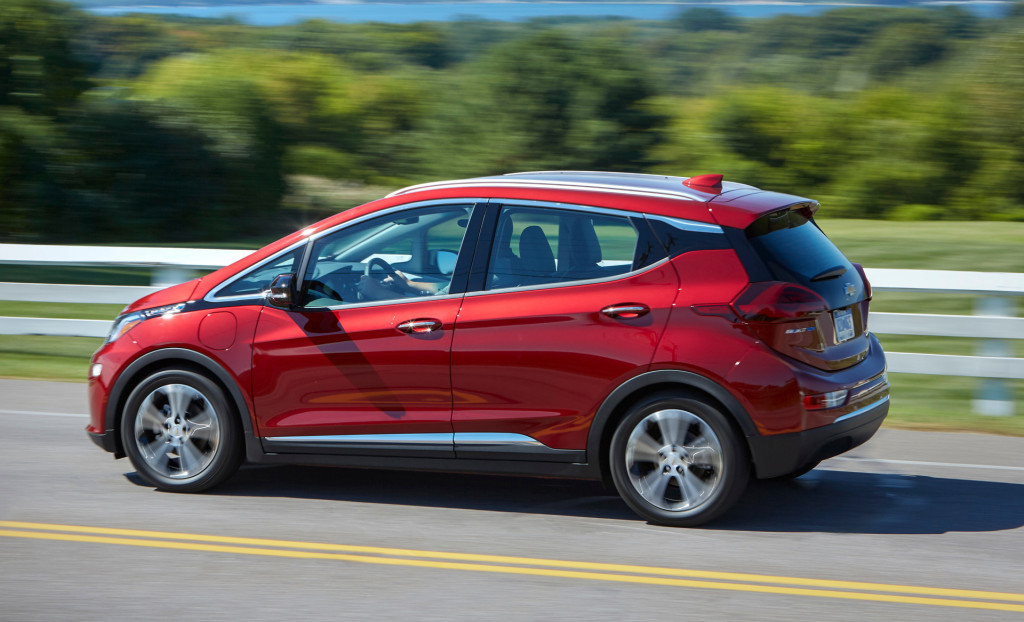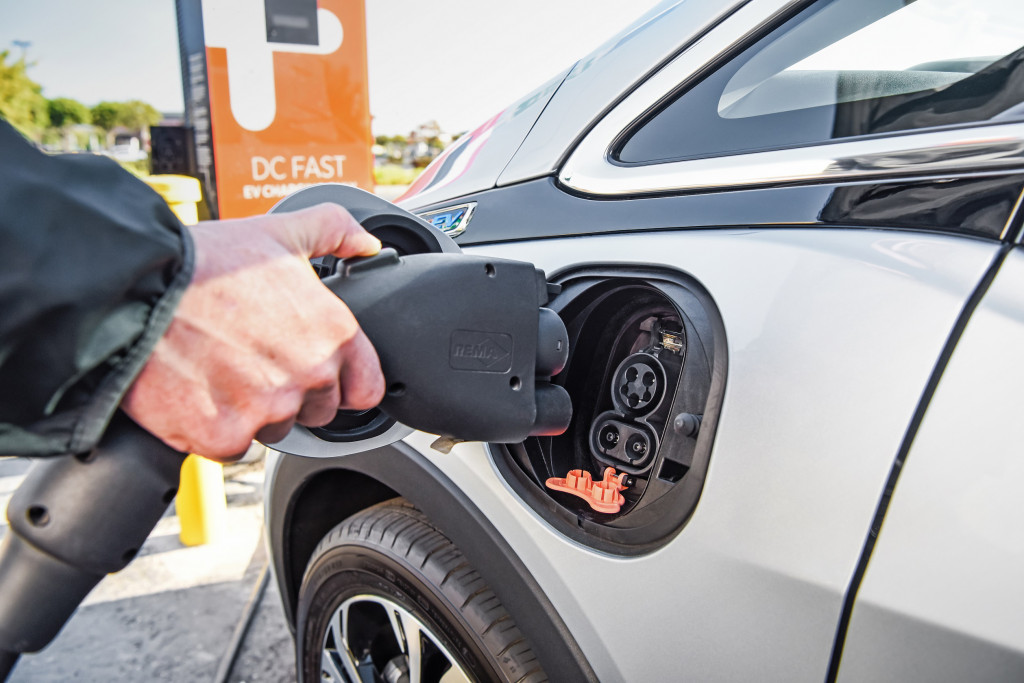General Motors has been teasing the possibility of a Bolt EV-based crossover for nearly two and a half years.
It’s been broadly assumed that such a model will offer a little more interior space and versatility than the current Chevrolet Bolt EV—as well as some chunkier design cues and all-wheel drive.
GM will soon deliver some, but definitely not all, of those things—in the upcoming Bolt EUV, which the automaker officially confirmed last Wednesday as part of its EV Day for media and investors.
At a no-cameras preview of about a dozen upcoming fully electric models, GM confirmed that the new Chevrolet Bolt EUV is three inches longer in wheelbase compared to the Bolt EV—allowing for more legroom and more headroom in back, and elongating the roofline in a way that makes the vehicle look slightly more upright at the back and might also slightly boost cargo space.
But the EUV likely won’t prove any more all-weather-capable than the Bolt EV—because like the Bolt EV, the EUV will be front-wheel drive only.

2020 Chevrolet Bolt EV
A mid-cycle redesign of the Bolt EV will arrive as a 2021 model and will precede the arrival of the EUV, which is due in Summer 2021, likely as a 2022 model. Both the 2021 Chevrolet Bolt EV and 2022 Chevrolet Bolt EUV will share some subtle changes on the outside and a revamped interior that’s more substantially upgraded.
On the outside, the most distinctive design change is a new front fascia flowing up to slimmer headlights.
Most importantly, the Bolt EV’s much-maligned front seats are being replaced with a design that’s clearly longer and wider (and perhaps lower) than the current seats. There’s a sportier steering-wheel design, and the instrument-panel design has also been given a more cleaned-up look—especially in the infotainment and climate-control zone—with the traditional shift lever gone, replaced by buttons.
As Bolt chief engineer Jesse Ortega pointed out to Green Car Reports, the upper dash and door materials have a stitched look and are now soft-touch, and that alone makes a huge difference for first impressions.
Ortega was eager to point out that the Bolt will also now come with a button-activated one-pedal driving mode—rather than the previous model’s ‘L’ mode. It’s something that he said Bolt EV fans and EV fans in general have been asking for.
The Bolt will also been equipped with a new camera and sensor array—a possible hint toward future self-driving vehicle efforts—and the EUV version will be the first non-Cadillac vehicle in GM’s lineup to offer Super Cruise, a feature that steers and has lane awareness on major Interstates—and soon, GM says, on “trunk roads” that are divided but with occasional junctions.

Chevrolet Bolt EV at ChargePoint station
Otherwise the existing powertrain and 66-kwh battery pack carry over from the 2020 Chevrolet Bolt EV to revamped 2021 Chevy Bolt EV and the EUV. GM officials have long hinted that the Bolt EV might be capable of more than its current 50-kw (officially, or 55-kw unofficially) peak fast-charging rate. With more 150-kw fast-charge connectors now, that could be one other upgrade to keep an eye out for.
The new variant will be made possible through a $300 million investment in GM’s Orion Township, Michigan plant, which currently makes the Bolt as well as the gasoline-powered Sonic subcompact car.
